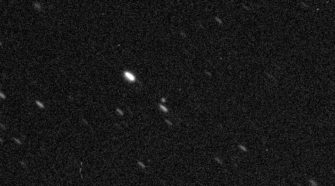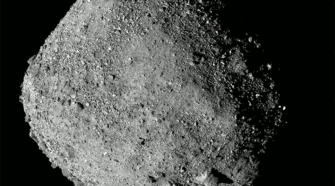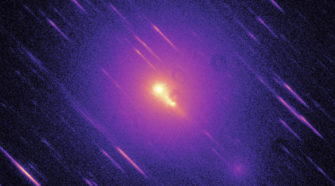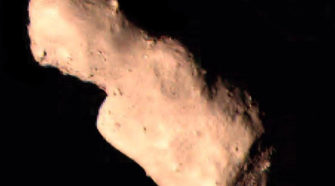Week 02
Asteroid discovered inside orbit of Venus
While, strictly speaking, it is not a “near-Earth” asteroid, an important asteroid has been discovered since I first put up this presentation. On January 4, 2020, the Zwicky Transient Facility survey, based at Palomar Observatory in California, discovered an 18th-magnitude object which was formally designated as 2020 AV2 when its discovery was announced on January …
This Week in History: January 5-11
JANUARY 5, 2005: The Kuiper Belt object now known as (136199) Eris is discovered by Mike Brown, Chad Trujillo, and David Rabinowitz on images taken in October 2003. Eris travels around the sun in a moderately-inclined and moderately eccentric orbit with a period of 558 years; it has one known moon (Dysnomia) and turns out …
Comet of the Week: Machholz C/2004 Q2
Perihelion: 2005 January 24.91, q = 1.205 AU Beginning with French astronomer Charles Messier and his contemporaries in the mid- to late 18th Century, the vast majority of comets were discovered visually by amateur astronomers who regularly swept the skies looking for these objects. While this means of comet discovery began to be supplanted by …
Special Topic: Near-Earth asteroids
Last week’s topic concerned the asteroids that occupy the so-called “main asteroid belt” between the orbits of Mars and Jupiter. The overwhelming majority of the first several hundred asteroids discovered, and, indeed, a large majority of the asteroids known today, reside in this region. However, as years went by and more and more asteroids kept …




